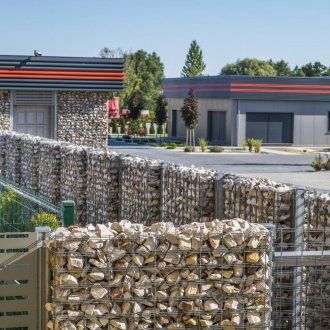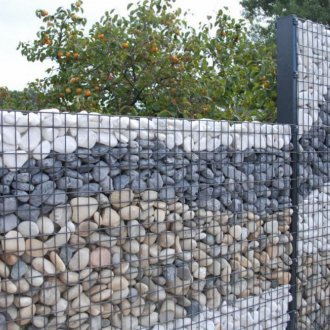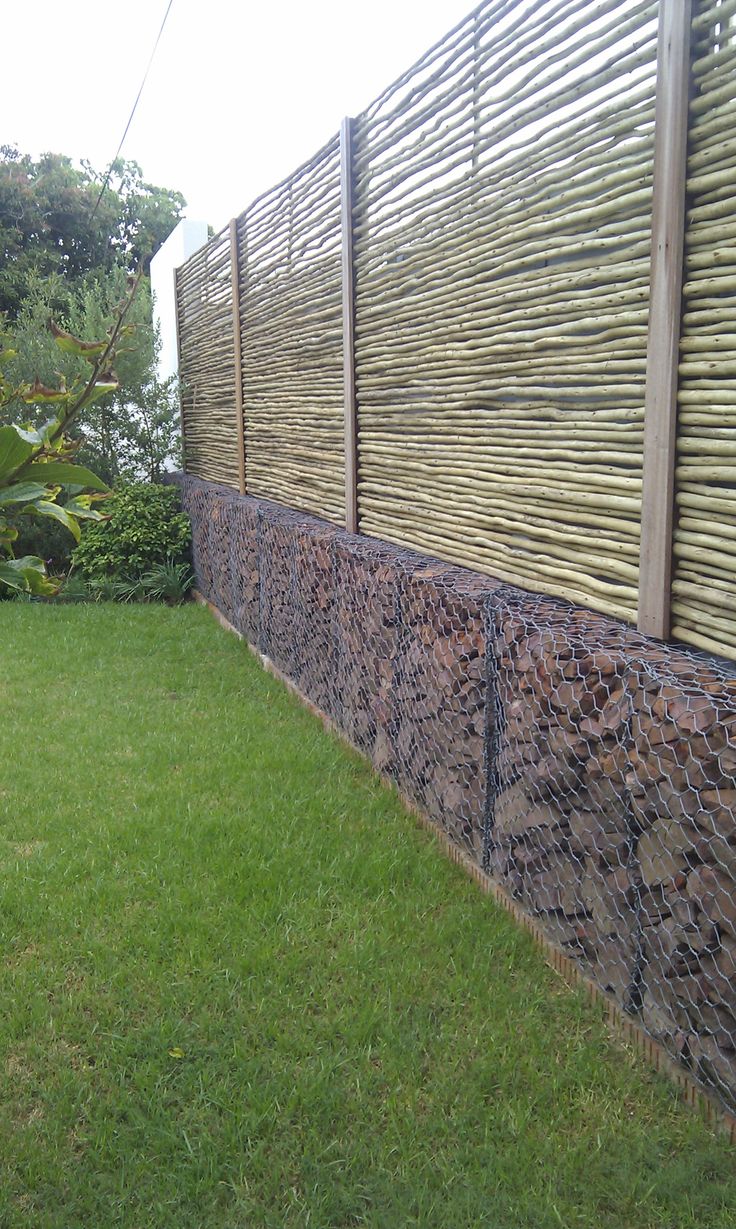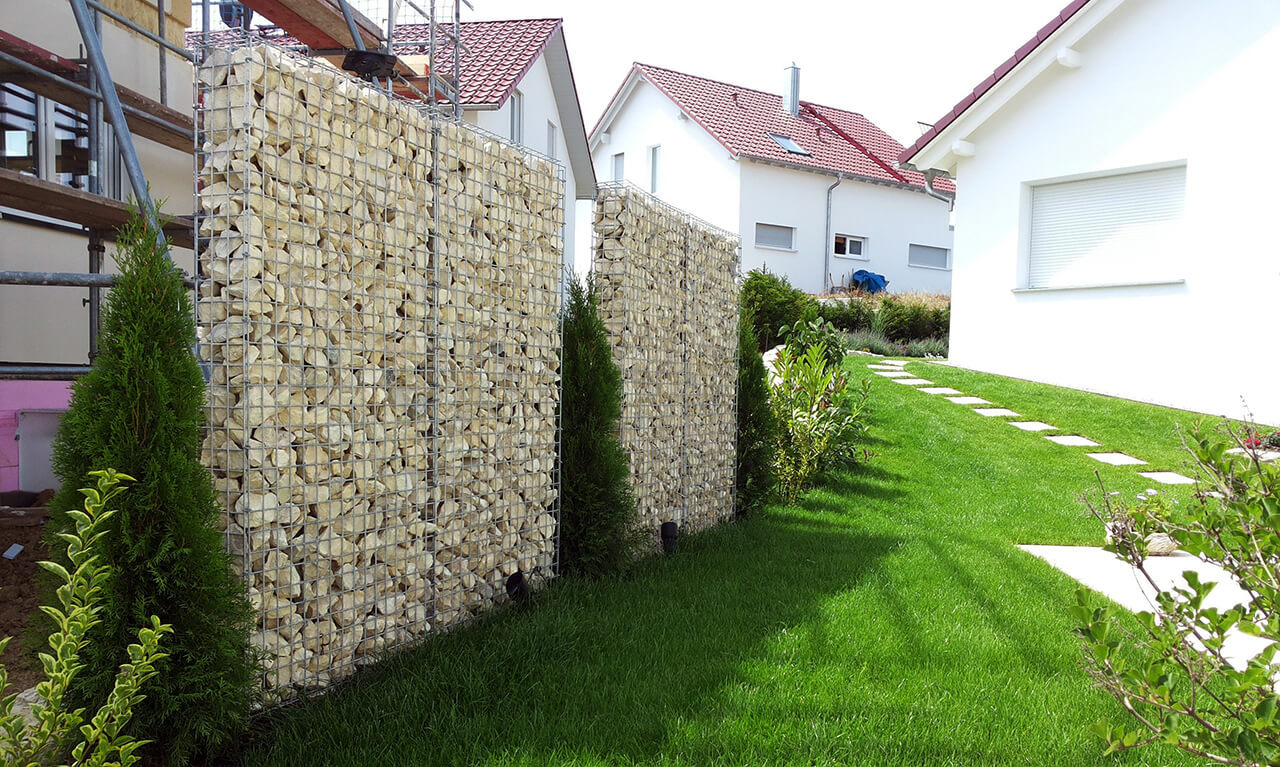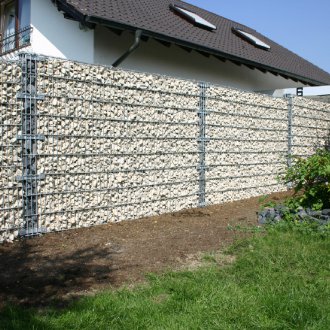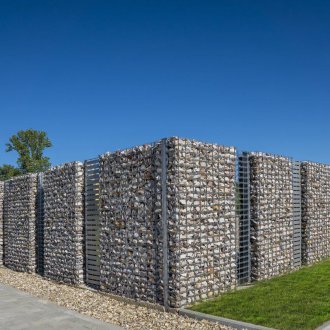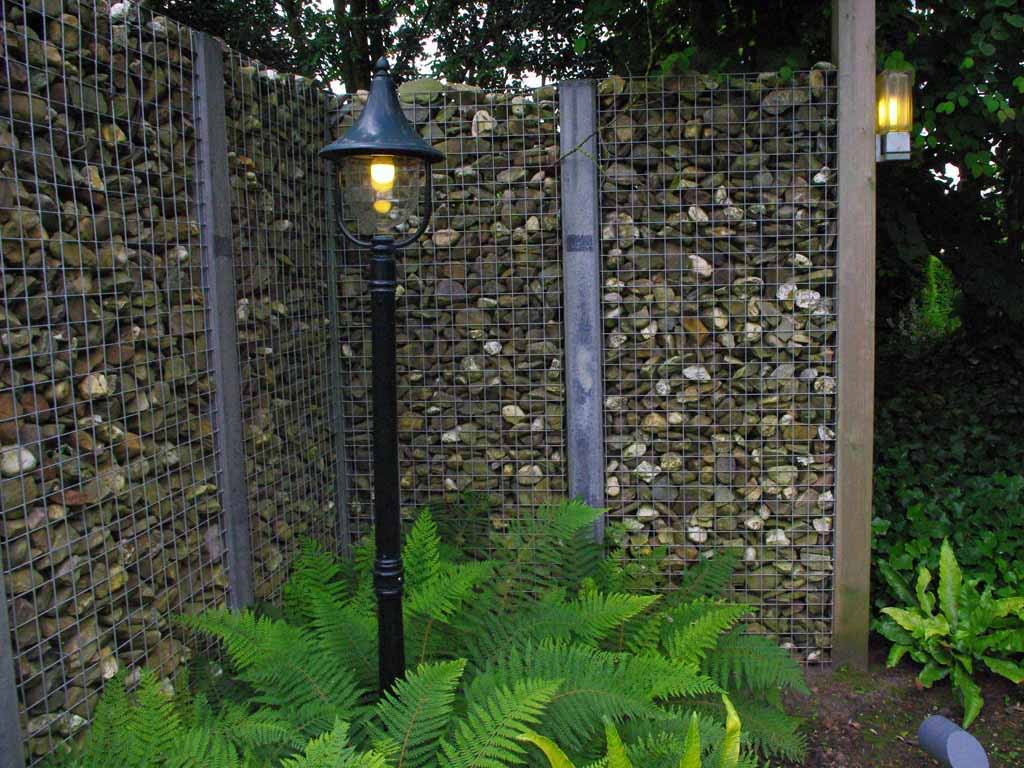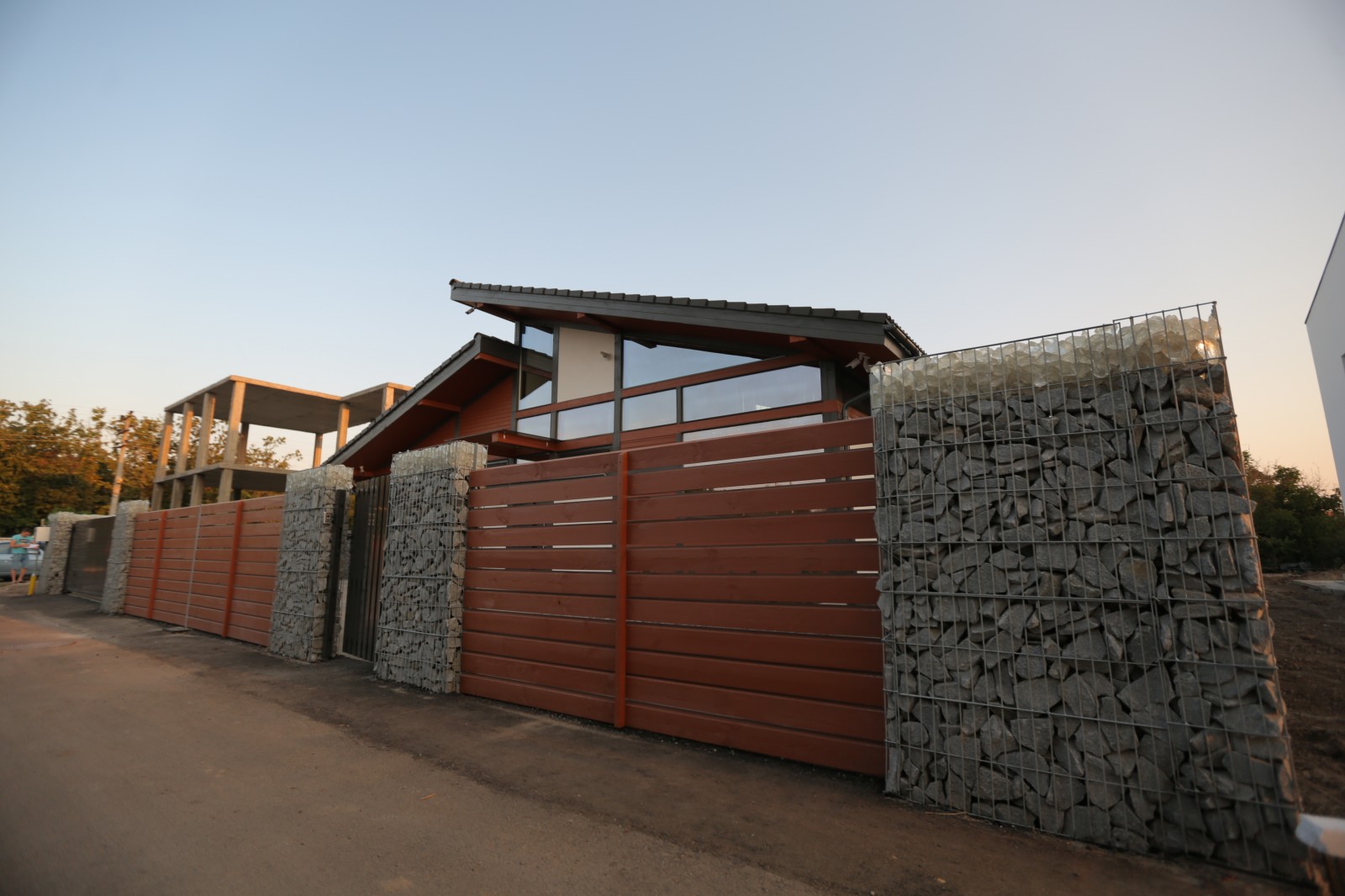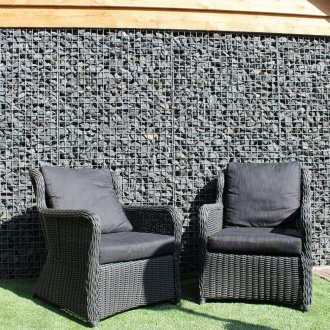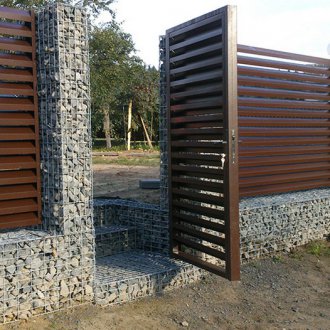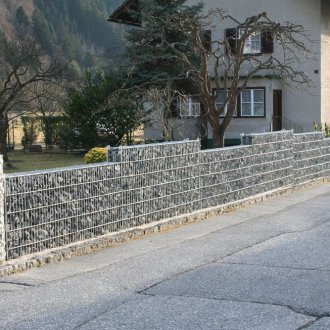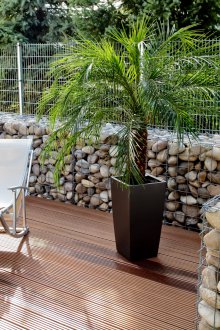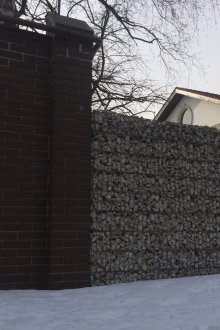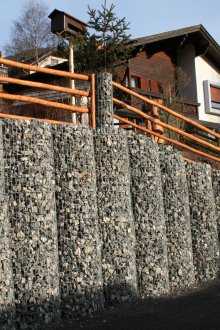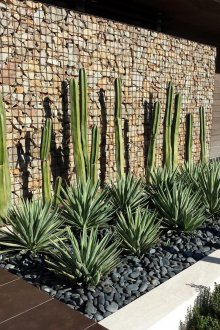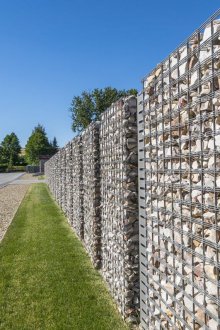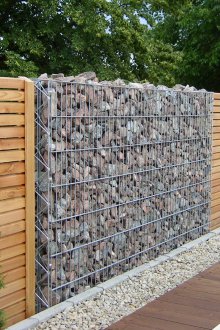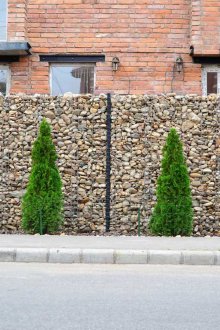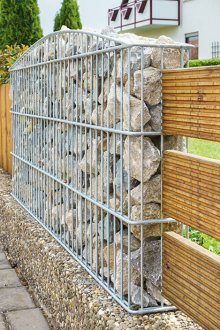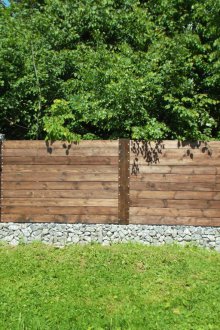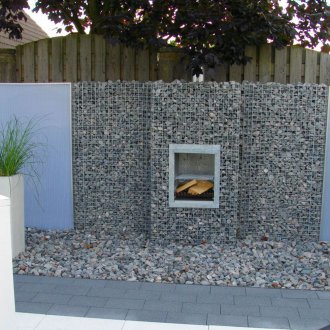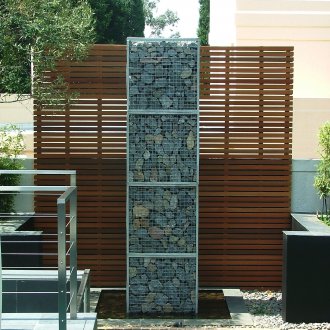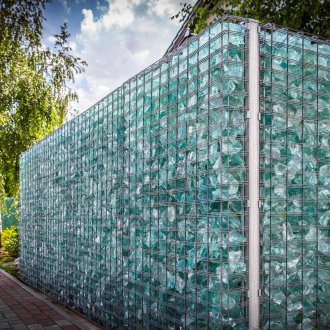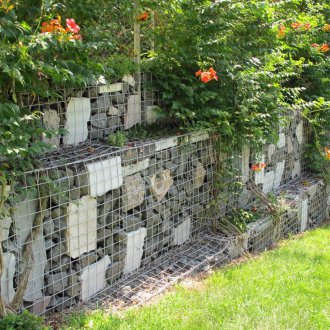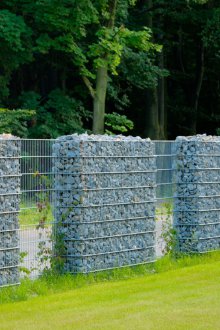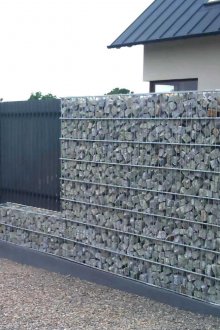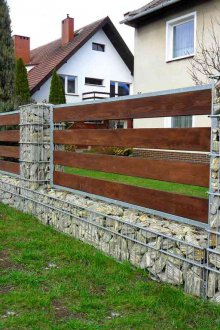Gabion fence - a worthy alternative to traditional fences (28 photos)
Content
The gabion design is a three-dimensional wire mesh filled with stones. Translated from Italian gabbione - "big cage." Initially, gabions were used in military affairs to protect gun batteries and looked like wicker baskets densely clogged with earth.
Today, the scope of application of structures has expanded significantly: protection of riverbeds and coasts, prevention of landslides on slopes. The owners of country houses found a worthy use for gabions - fences naturally fit into the landscape design and quite reliably enclose houses and plots.
Design features of gabions
For the manufacture of fences, two elements are used: a metal mesh and a filler.
The gabion net is made by weaving hexagonal cells from the wire (sizes 60, 80, 100 mm), which are interconnected by double torsion of the wire. The work uses galvanized steel. Depending on operating conditions, manufacturers offer wire:
- Z-galvanized;
- CPU - galvanized + coated with polymer;
- CAAM - coated with an alloy (zinc, aluminum, mischmetal);
- CAMMP - alloyed (zinc, aluminum, mischmetal) + coated with polymer.
A wire with a diameter of 2.2 to 3.4 mm is used. In the construction markets for the installation of fences, they sell nets in rolls 25 m or 50 m long and 1.0 m, 2.0 m, 3.0 m and 4.0 m high.
For a long service life of the structure, stones are selected that have frost resistance, are not fragile or erosive, and also characterized by increased hardness. Cobblestone, pebble, quarry stone possess similar qualities. The material is coarse, polished. The cheapest are shale, sandstone.
Particular attention is paid to the frost resistance of the stone, since during severe frosts the material can crack. Water falling into cracks leads to their expansion. After a while, the stones will begin to crumble, which will lead to the destruction of the entire fence.
The main requirement for filling - the parameters of the stones should not be less than the size of the cell (and better - more, about 30-40%).
Forms of construction
Due to the flexibility of the mesh, three-dimensional products of various types are produced. To equip the fence, you can use the following designs:
- box-shaped - in the form of mesh rectangles of various parameters, equipped with lids and internal partitions. They are made by attaching mesh walls to the welded frame or by welding the entire wire duct. In the second method of production, the products are more durable and accurate;
- cylindrical - gabions resemble "candy" and are available in lengths from 2.0 to 4.0 m, and with a diameter of 0, 65 or 0.95 m. A similar shape is less strong than box-shaped, as it does not contain partitions. A similar gabion is used, as a rule, as an additional decorative element of the fence.
To facilitate the construction of the fence, you can purchase ready-made fencing elements in the store of suitable sizes: from 30 to 100 cm wide, from 50 to 100 cm high and from 2 to 6 m long.
Main characteristics of gabion structures
A distinctive feature of such a fence is its ability to become stronger over time.This is explained by the design feature: the stones are gradually stacked in the grid more and more densely. Particles of soil and fine dust falling between the stones give the whole structure a solidity. It is believed that the strength of the stone fence after about 5 years increases by 50%. The design of gabions has other positive qualities.
Flexibility is ensured by a metal mesh, which allows the structure to follow any direction under various bends, as well as adapt to land subsidence. Moreover, even a significant erosion of the soil at the base of the fence can cause only some deformation of the structure, without causing serious damage.
Increased strength and stability are ensured by the properties of the metal mesh, which acts as the reinforcing element of the structure. The grid turns the whole fence into a single whole. The fence adequately withstands changes in humidity and temperatures, as well as loads from soil pressure.
Water permeability is due to the porosity of the gabion, which eliminates the effect of hydrostatic pressure on the fence, so there is no need to create additional drainage. Due to the natural filtration of water, vegetation may appear on the surface of the fence.
Advantages of installing a gabion fence
- the democratic cost of materials, the cost-effectiveness of installation - are ensured by low costs for arrangement, maintenance of the structure, and repair. For the construction of the fence does not require special equipment, special skills. Mechanical damage to a certain area of the fence does not reduce the strength of the entire structure and is easily repaired;
- esthetic appearance - designs worthily decorate any suburban area. It is possible to build hedges of the required sizes and shapes, as well as combine gabions with other elements and design options for fences;
- lack of any special care for the structure. If desired, dust can be washed off the fence even with a stream of water from a hose;
- durability - guaranteed by the long service life of the steel mesh (wire coated with plastic, serves more than 100 years);
- environmental friendliness - for the construction of fences a natural natural filler is used. Due to the permeability of water and the ability to accumulate soil, gabions heal the landscape.
How to make a fence?
For the installation of the fence, it is not necessary to erect the foundation, since the structure is self-supporting.
The work uses materials: rolls of mesh, stone, supports, staples, lintels, cement. You will need the following tools: pliers, wire cutters, a shovel, a building level.
Installation steps:
- Marking is carried out on the site, places for supporting pillars are determined. The installation site of the hedge is leveled. If you wish, you can additionally dig a trench (not more than 30 cm deep and 10 cm wider than the intended fence) and fill it with sand by about 15 cm. The bedding is compacted, and cinder blocks can be installed on top as a base.
- Suitable pits are prepared for the supports (depth not less than 1/3 of the column length). It is recommended to install square / rectangular supports and maintain a distance between them of no more than 2.0-2.5 m. To control the verticality of the installation, the building level is used. The pits are filled with cement. The installation of the grid continues after the solution has completely dried (about 3 days).
- The bases of the structure are cut from the roll. In the center of the bases (in appropriate places), holes for supports are cut in advance. A gabion frame is formed - the mesh web is attached to the supports and the bottom using brackets.
- Separate sections of the fence are filled with stone. At this stage, it is important to ensure that the stones are stacked tightly and no voids form. In one approach, only a third of the gabion is filled. To fix the stacked stones, horizontal tie braces are used.
- Similarly, all gabions are filled.Given the settlement of stones, structures should be filled 2-3 cm above the top edge.
- Testament - temporary fixation of the roof on the structure. After precipitation of the stones, the upper gabion net is tightly tied to the side faces of the structure using brackets. If there are stones that interfere with a tight fit, then they are turned over or shifted to the center of the structure.
When filling the sections, large stones are laid near the grid, and it is desirable to fill small stones in the center. If you carefully and gradually stack colored stones, you can put an interesting picture on the wall of the structure.
During construction, two types of fence are created: solid (solid structure, completely covering the area from prying eyes) and decorative (with wooden, metal elements).
The materials should be combined taking into account their different characteristics: decorative wooden elements will lose their elegant appearance faster than stone sections. If it is difficult to choose the appropriate type of fence, then you can turn to professionals who will take into account your wishes and features of the house, the site.
